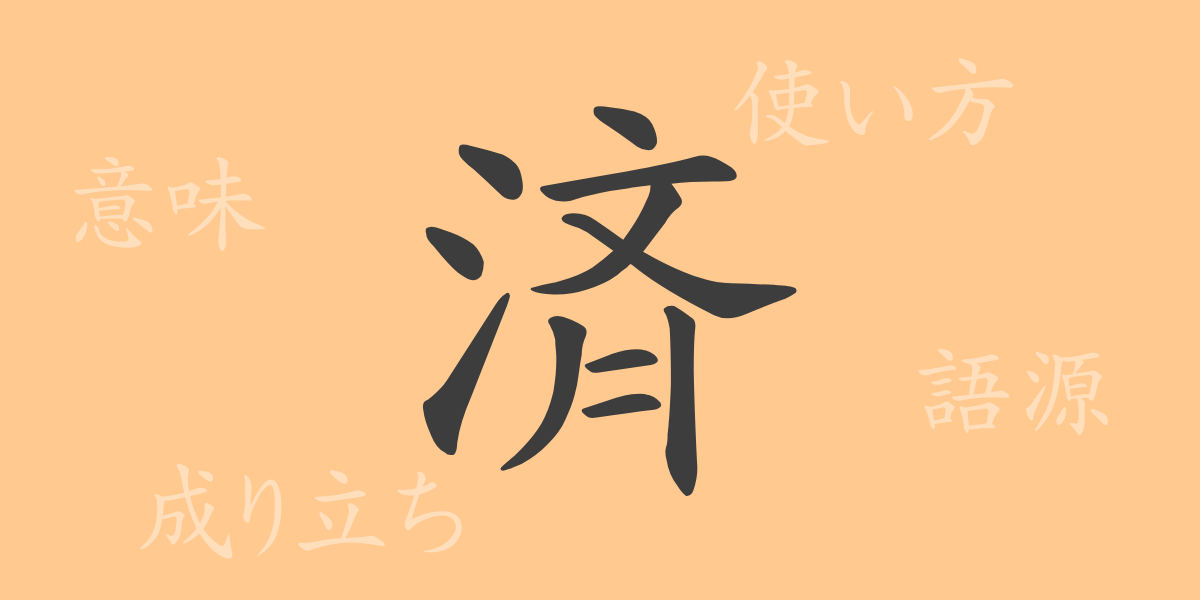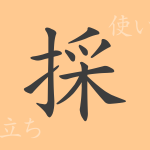The kanji deeply rooted in Japanese culture each carry a rich history and meaning. The common-use kanji “済” (sai) is no exception, being one of the important kanji frequently used in our daily lives. In this article, we will delve into the origins, meanings, usage, readings, stroke count, and idioms that use “済” (sai). Let’s explore the world of the kanji “済” (sai) while appreciating the depth of the Japanese language.
Etymology of 済 (sai)
The kanji “済” (sai) is a character that originated in ancient China, consisting of “氵” (sanzui, meaning water) and “羊” (yō, meaning sheep). It originally depicted the image of a sheep crossing a river. From this imagery, it evolved to mean “to accomplish,” “to finish,” and “to save.” Over time, it started being used in contexts related to economy and settlement, and it continues to be widely used in modern Japanese in various scenes.
Meanings and Usages of 済 (sai)
The kanji “済” (sai) means “to finish,” “to complete,” “to save,” and “to suffice.” In economic contexts, it also means “to pay” or “to settle.” Specific usages include expressions in daily conversations such as “仕事が済む” (shigoto ga sumu, work is finished), “食事が済む” (shokuji ga sumu, meal is finished), and “借金を済ませる” (shakkin o sumaseru, to pay off debt). In business contexts, it is used in phrases like “経済が済む” (keizai ga sumu, economy settles) and “決済を済ませる” (kessai o sumaseru, to settle a payment).
Reading, Stroke Count, and Radical of 済 (sai)
Understanding the readings and components of the kanji “済” (sai) helps to grasp its deeper meaning.
- Reading: In the on’yomi reading, it is read as “サイ” (sai), and in the kun’yomi reading, it is read as “すむ” (sumu) and “すます” (sumasu).
- Stroke count: It consists of 11 strokes.
- Radical: The radical is 水 (mizu, meaning water) or 氵 (sanzui, water radical).
Idioms, Phrases, and Proverbs Using 済 (sai) and Their Meanings
Idioms and phrases that include the kanji “済” (sai) reflect its meanings. For example, “済世の利器” (saisei no riki) means tools or methods that save the world and benefit people. “事を済ませる” (koto o sumaseru) means to complete something. These expressions showcase the richness of the Japanese language.
Conclusion on 済 (sai)
The kanji “済” (sai), as its form suggests, means to accomplish or finish something and is very useful in our daily lives. Frequently used in both everyday and business contexts, this kanji symbolizes the richness of Japanese expression. Through this article, you have gained an understanding of the diverse aspects of “済” (sai) and deepened your knowledge of the Japanese language.

























